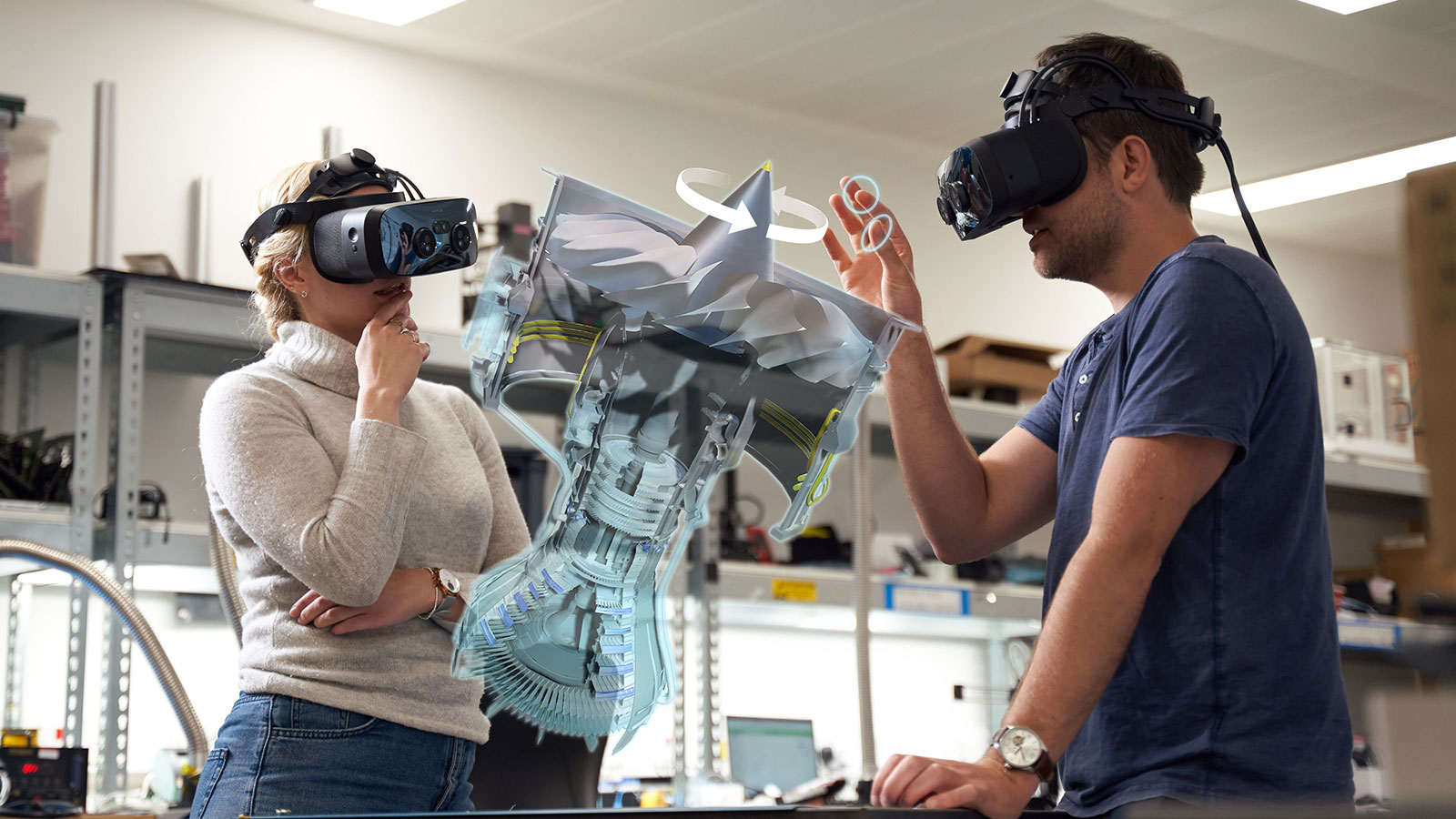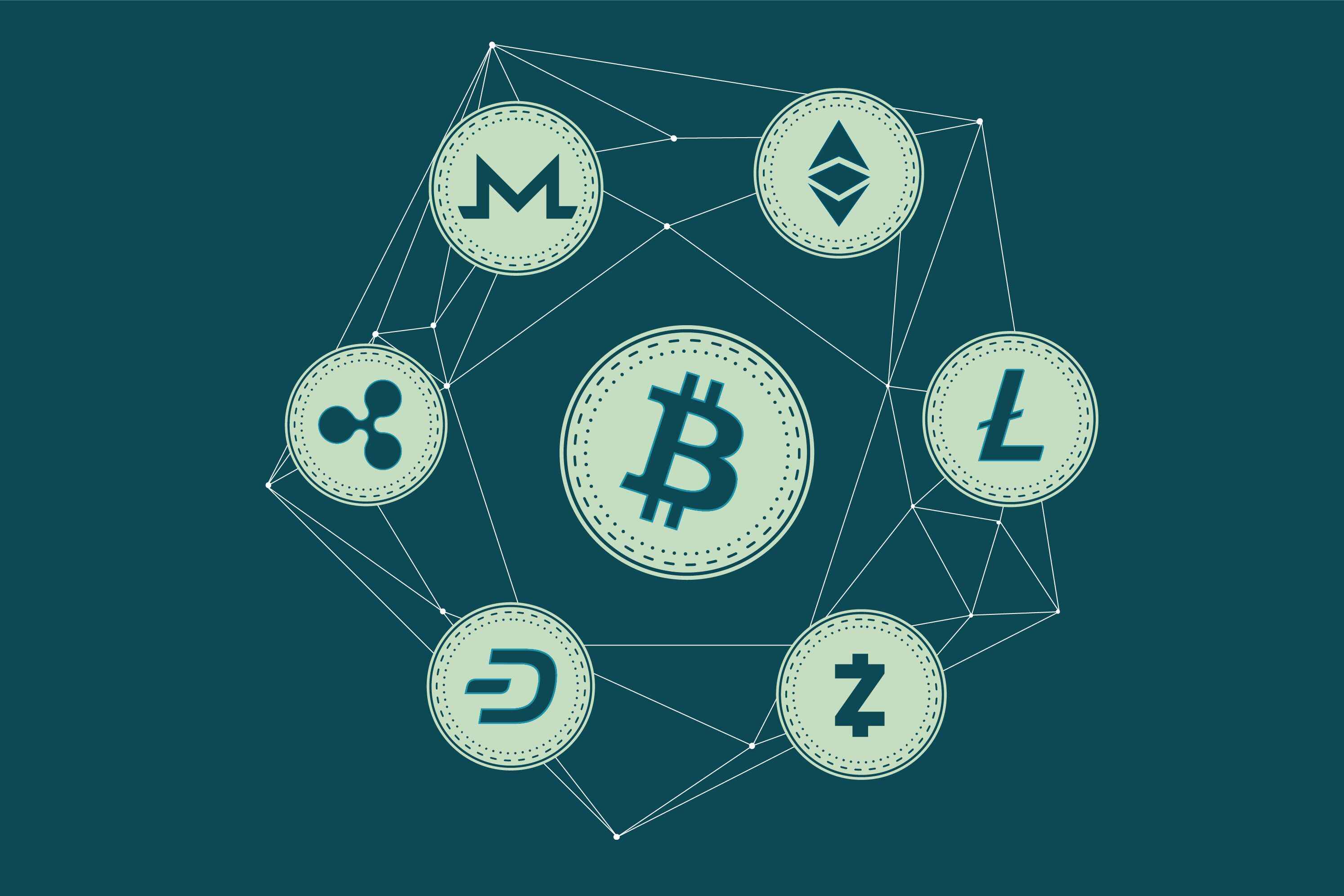Introduction
The concept of the metaverse, a virtual reality space where users can interact with a computer-generated environment and other users, has been a topic of intrigue and speculation. It promises a digital realm where the boundaries of physical reality are blurred, offering endless possibilities for entertainment, communication, and even commerce. However, despite the initial excitement and hype surrounding the metaverse, it has largely failed to live up to its lofty expectations.
The metaverse was envisioned as a utopian virtual world, where people could escape the limitations of the physical world and create their ideal digital existence. It was meant to be a fully immersive and interactive experience, with users being able to explore virtual landscapes, interact with realistic avatars, and engage in various activities. While some progress has been made in this direction, the metaverse has fallen short in several key areas, impeding its widespread adoption and success.
This article will explore the reasons behind the metaverse’s failure to live up to its potential. We will delve into the lack of user engagement, technical limitations, high costs and required infrastructure, privacy and security concerns, lack of standardized platforms and interoperability, limited content and diversity, as well as issues of exclusion and inequality. By understanding these challenges, we can gain insights into why the metaverse has not taken off as expected and what needs to be addressed for its future prospects.
Lack of User Engagement
One of the major hindrances to the success of the metaverse is the lack of user engagement. While the concept of an immersive virtual world is intriguing, the reality often falls short of expectations. Many users find the metaverse to be overwhelming, confusing, or simply uninteresting. The complex interfaces, unintuitive controls, and steep learning curves deter users from fully embracing the metaverse experience.
Moreover, the metaverse lacks compelling and meaningful activities that can keep users engaged in the long term. While there are virtual worlds and games within the metaverse, they often lack depth and substance, leading to a lack of motivation for users to spend significant time and energy in these virtual environments.
Another significant factor contributing to the lack of user engagement is the absence of social interactions and connections. While the metaverse was envisioned as a platform for social interaction and community building, it often feels isolating and impersonal. The limited scope for genuine human connection and meaningful relationships within the metaverse diminishes its appeal for many users.
Furthermore, the metaverse has struggled to bridge the gap between the real world and the virtual world. Users often find it challenging to see the relevance or value of spending time in a digital space that does not offer tangible benefits or real-world consequences. This disconnect makes it difficult to cultivate a sense of purpose or investment in the metaverse, leading to decreased user engagement.
To overcome the issue of lacking user engagement, the metaverse needs to prioritize user experience and create more intuitive and user-friendly interfaces. Additionally, developers need to focus on developing richer and more immersive content that provides meaningful activities and experiences for users. Encouraging social interactions and fostering a sense of community within the virtual environment can also enhance user engagement. Finally, bridging the gap between the metaverse and the real world by highlighting tangible benefits and integrating real-world consequences can attract and retain users. Only by addressing these challenges can the metaverse hope to achieve the desired level of user engagement and fulfill its potential as a vibrant and immersive digital realm.
Technical Limitations
Despite the lofty aspirations of the metaverse, it has been held back by numerous technical limitations. The development of a seamless and fully immersive virtual reality experience requires robust technological infrastructure, advanced graphics processing capabilities, and high-speed internet connectivity. However, these requirements pose significant challenges to the widespread adoption and smooth functioning of the metaverse.
One of the primary technical limitations is the hardware requirements. Immersive virtual reality experiences often demand powerful hardware, including high-end gaming computers and virtual reality headsets. These devices can be costly and inaccessible to many users, limiting the potential user base of the metaverse.
Additionally, the metaverse faces challenges in terms of network infrastructure and bandwidth. For a truly immersive and interactive experience, a reliable and high-speed internet connection is essential. However, not all regions have access to fast internet connections, hindering the widespread adoption and usability of the metaverse on a global scale.
Another technical limitation is the processing power required to render realistic and detailed virtual environments. Creating lifelike graphics and ensuring smooth performance can be a daunting task, especially for resource-intensive applications. This can result in laggy experiences, poor graphics quality, and overall subpar user experiences, which undermine the appeal and usability of the metaverse.
Moreover, the metaverse faces challenges in terms of cross-platform compatibility and interoperability. Different platforms and devices have their own technical specifications and requirements, making it difficult to create a seamless and unified experience across various devices and operating systems. This fragmentation hampers the growth and accessibility of the metaverse, as users may need to invest in specific hardware or software to fully participate in the virtual world.
To overcome these technical limitations, significant advancements in hardware and network infrastructure are required. Accessibility and affordability of the necessary devices should be prioritized to expand the user base. Additionally, improvements in graphics processing technologies and optimization techniques can enhance the visual quality and performance of the metaverse. Standardizing platforms and creating protocols for interoperability can also facilitate a more seamless and inclusive metaverse experience.
High Cost and Required Infrastructure
One of the significant barriers to the widespread adoption of the metaverse is the high cost and required infrastructure. Building and maintaining a metaverse ecosystem demands substantial financial investment and a robust technological infrastructure, placing it out of reach for many individuals and organizations.
The development and deployment of the metaverse require extensive resources, including investment in hardware, software, and server infrastructure. Creating immersive virtual environments, realistic avatars, and interactive experiences necessitates advanced technologies and specialized expertise, which can be costly to acquire and maintain. This high cost of development and maintenance translates to higher prices for consumers, making the metaverse inaccessible for those with limited financial means.
Moreover, the infrastructure required to support the metaverse, such as high-speed internet connectivity and data centers, presents additional challenges. Many regions still lack reliable and affordable internet access, preventing users from fully engaging with the metaverse. Furthermore, the bandwidth and processing power demands of the metaverse strain existing network infrastructures, leading to potential connectivity issues and suboptimal user experiences. Expanding the necessary infrastructure to support the metaverse on a global scale requires substantial investment and collaboration between various stakeholders, further contributing to the high costs and challenges.
The high cost of entry into the metaverse extends beyond the development and infrastructure aspects. Participating in the metaverse often requires users to invest in expensive hardware, such as virtual reality headsets and high-performance computers. These costs can prohibit the widespread adoption of the metaverse, particularly among individuals and communities with limited financial resources.
To address the issue of high costs and required infrastructure, efforts should be made to lower the barriers to entry. This includes exploring cost-effective development strategies, such as leveraging open-source technologies and collaborating with industry partners. Governments and organizations should invest in expanding the necessary infrastructure, focusing on improving internet connectivity and data center capabilities. Additionally, promoting and supporting affordable and accessible hardware options can ensure that the metaverse is available to a wider audience, promoting inclusivity and diversity within the virtual world.
Privacy and Security Concerns
Privacy and security are significant concerns that have plagued the metaverse, hindering its adoption and trust among users. The immersive nature of the metaverse raises questions about data privacy, personal information protection, and the potential for surveillance and exploitation within the digital realm.
One of the primary concerns is the collection and use of user data within the metaverse. As users navigate virtual environments and interact with other users or platforms, a wealth of personal information is generated and potentially captured. This data can be used for targeted advertising, user profiling, or even unauthorized surveillance, raising concerns about privacy violations and data misuse.
Additionally, the metaverse poses challenges regarding identity verification and authentication. As users engage in various activities and transactions within the virtual world, ensuring the authenticity of identities and protecting against identity theft becomes crucial. The lack of robust authentication systems and frameworks can lead to security breaches, fraudulent activities, and the erosion of trust within the metaverse ecosystem.
Furthermore, the metaverse is not immune to cyber threats, including hacking, malware, and phishing attacks. These vulnerabilities can compromise the integrity and security of user accounts, leading to unauthorized access, financial loss, or even personal harm. The potential for cybercrime within the metaverse raises concerns about the overall safety and security of virtual experiences.
To address these privacy and security concerns, metaverse developers need to prioritize user data protection and privacy measures. Implementing transparent data collection and usage policies, as well as robust encryption and authentication mechanisms, can help build trust among users. Collaboration with cybersecurity experts and adopting best practices from the digital security industry can further strengthen the metaverse’s security posture. Additionally, educating users about potential risks and providing tools and resources to protect their privacy can empower individuals to navigate the metaverse securely.
Lack of Standardized Platforms and Interoperability
One of the major challenges facing the metaverse is the lack of standardized platforms and interoperability. The metaverse is comprised of various virtual worlds, platforms, and applications, each with its own set of rules, interfaces, and technical specifications. This fragmentation and lack of cohesion hinder the seamless integration and interoperability of different components within the metaverse.
The absence of standardized platforms and protocols makes it difficult for users to navigate between different virtual worlds and interact with users on other platforms. It limits the ability to transfer assets, data, and even avatars between different metaverse platforms, creating siloed experiences and hindering the vision of a unified and interconnected virtual reality ecosystem.
Moreover, the lack of interoperability restricts the development and adoption of cross-platform applications and experiences. Content creators and developers have to build specific versions of their applications or experiences for different platforms, adding complexity and hindering innovation. This lack of interoperability prevents the seamless collaboration and integration of ideas, resources, and user bases within the metaverse.
Standardization plays a crucial role in ensuring compatibility, accessibility, and scalability within the metaverse. By establishing common frameworks, protocols, and technical specifications, developers can create interoperable applications and experiences that can seamlessly connect and communicate across different platforms. Standardization can also enhance user experiences by providing consistent interfaces, inputs, and outputs, making it easier for users to navigate and interact with the metaverse.
To address the lack of standardized platforms and interoperability, industry collaboration and cooperation are essential. Developers, platform operators, and industry organizations should work together to establish common standards, open APIs, and interoperability frameworks. Initiatives such as cross-platform development tools, asset exchange protocols, and identity management systems can help create a more unified and connected metaverse experience. By fostering interoperability, the metaverse can unlock new possibilities for collaboration, creativity, and user engagement.
Limited Content and Diversity
A significant challenge faced by the metaverse is the limited content and lack of diversity within its virtual environments. While the concept of the metaverse promises endless possibilities and immersive experiences, the reality often falls short due to a lack of diverse content and experiences that cater to different interests, cultures, and demographics.
The metaverse relies heavily on content creators and developers to populate its virtual worlds with engaging and meaningful experiences. However, the pace of content creation has not kept up with the demand and expectations of users. Many virtual worlds within the metaverse offer limited and repetitive content, leading to a lack of novelty and excitement for users.
Another aspect of limited content and diversity within the metaverse is the lack of representation and inclusivity. Virtual worlds often prioritize certain demographics, interests, and cultural perspectives, while neglecting others. This lack of diversity can make marginalized groups feel excluded and diminish the overall appeal and potential of the metaverse as a platform for equal representation and expression.
Furthermore, the metaverse’s content limitations extend beyond entertainment and leisure. The lack of educational and professional content within the virtual worlds restricts the potential of the metaverse as a platform for learning, skill development, and career advancement. By expanding the range of content to include educational courses, professional simulations, and collaborative workspaces, the metaverse can cater to a broader range of users and unlock new opportunities for growth and development.
To address the issue of limited content and diversity, metaverse platforms and developers should prioritize content creation and curation efforts. Encouraging and supporting a diverse community of content creators can foster the creation of a wide range of experiences that cater to different interests, cultures, languages, and demographics. Additionally, promoting inclusive and diverse representation within virtual worlds can ensure that the metaverse is a space where everyone feels welcome and represented.
Furthermore, collaborations and partnerships with educational institutions, industry experts, and professional organizations can help expand the range of content within the metaverse, catering to both leisure and educational purposes. By embracing content diversity, the metaverse can become a vibrant and inclusive digital world that truly reflects the richness and diversity of our real-world experiences.
Exclusion and Inequality
The metaverse, despite its promise of a digital realm for all, has faced challenges in addressing exclusion and inequality within its virtual spaces. Issues related to access, representation, and systemic biases have perpetuated a sense of exclusion and inequality among certain groups of users.
Access to the metaverse is not evenly distributed, with factors such as geographic location, economic status, and technological infrastructure influencing participation. Limited internet connectivity and lack of affordable devices pose significant barriers, preventing marginalized communities and individuals from fully engaging with the metaverse.
Moreover, representation within the metaverse is often skewed, reinforcing existing societal biases and excluding diverse voices and perspectives. Lack of diverse avatars, cultural representation, and inclusivity in virtual spaces can perpetuate discrimination and marginalize underrepresented groups. This not only limits the metaverse’s potential for fostering empathy and understanding but also alienates those who do not see themselves reflected in the virtual world.
Furthermore, systemic biases present in society can be replicated and amplified within the metaverse. Inequalities such as racism, sexism, and discrimination can be perpetuated through avatars, interactions, and virtual environments. Without conscious effort to address these issues, the metaverse risks becoming an extension of the real-world inequalities it was meant to transcend.
To combat exclusion and inequality, the metaverse must prioritize accessibility and inclusivity. Efforts should be made to bridge the digital divide by fostering partnerships to improve internet affordability and connectivity. Technological advancements that lower the entry barriers, such as affordable virtual reality equipment or browser-based access, can also help make the metaverse more accessible to a wider range of users.
Diverse representation and inclusivity should be a fundamental consideration in the metaverse’s development. Providing tools and frameworks for users to customize and express their identities, promoting cultural diversity, and actively encouraging underrepresented voices and perspectives can help create a more inclusive and equitable metaverse. Collaboration with diverse content creators and communities can ensure that the virtual world reflects the richness and diversity of the real world.
Additionally, addressing systemic biases and implementing robust systems for reporting and addressing discriminatory behaviors within the metaverse is crucial. Developers and platform operators need to actively promote and enforce codes of conduct, community guidelines, and policies that foster a safe and inclusive environment for all users.
By striving to dismantle barriers, promote inclusivity, and challenge existing inequalities, the metaverse can fulfill its potential as a transformative and empowering digital space where all individuals have equal opportunities for engagement, expression, and growth.
Unrealistic Expectations and Hype
One of the factors contributing to the metaverse’s perceived failure is the unrealistic expectations and hype that surrounded its inception. The concept of a fully immersive and interconnected virtual reality experience captured the imagination of the public, leading to heightened anticipation and exaggerated claims about what the metaverse could achieve.
The hype surrounding the metaverse created unrealistic expectations among users and investors. The vision of a utopian digital realm where people could escape the limitations of the physical world and live out their wildest dreams fueled a sense of excitement and anticipation. However, the practical implementation and realization of such grandiose ideas proved to be much more challenging and complex than initially envisioned.
The initial hype also led to a flood of speculative investment and overvaluation of metaverse-related projects. This speculative bubble inflated expectations even further, creating an environment where the metaverse became a buzzword that attracted attention and funding, often at the expense of critical evaluation and realistic assessment.
However, as the metaverse started to materialize, it became clear that the technology and infrastructure required to achieve the desired level of immersion and interconnectivity were not yet fully developed or accessible. The metaverse’s progress has been slower and more fragmented than what was initially anticipated, leading to disappointment among some users and investors.
Moreover, the hype around the metaverse overshadowed the challenges and limitations that needed to be overcome for its widespread adoption. Issues such as user engagement, technical constraints, high costs, and privacy concerns were often downplayed or ignored in favor of painting an idealized picture of the metaverse. This lack of critical scrutiny contributed to unrealistic expectations and a gap between the metaverse’s promised potential and its actual implementation.
To manage expectations and address the challenges of the metaverse, it is crucial to foster a balanced and realistic dialogue. Open discussions about the limitations, challenges, and ongoing development efforts can help set more realistic expectations among users, investors, and stakeholders. Collaborative efforts to address technical, financial, and social barriers can ensure that the metaverse continues to evolve and improve based on real-world needs and demands. By focusing on sustainable growth and gradual development, the metaverse can move beyond the hype and build a foundation for a more meaningful and impactful virtual reality experience.

























